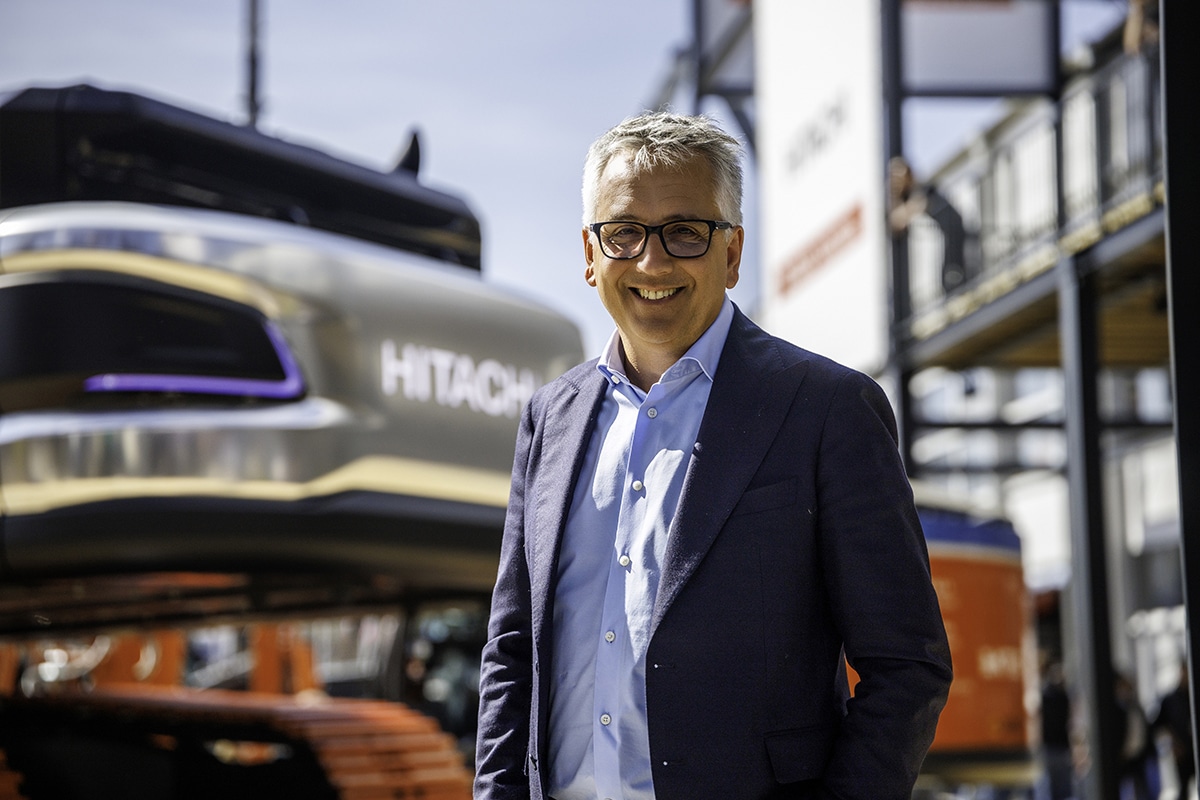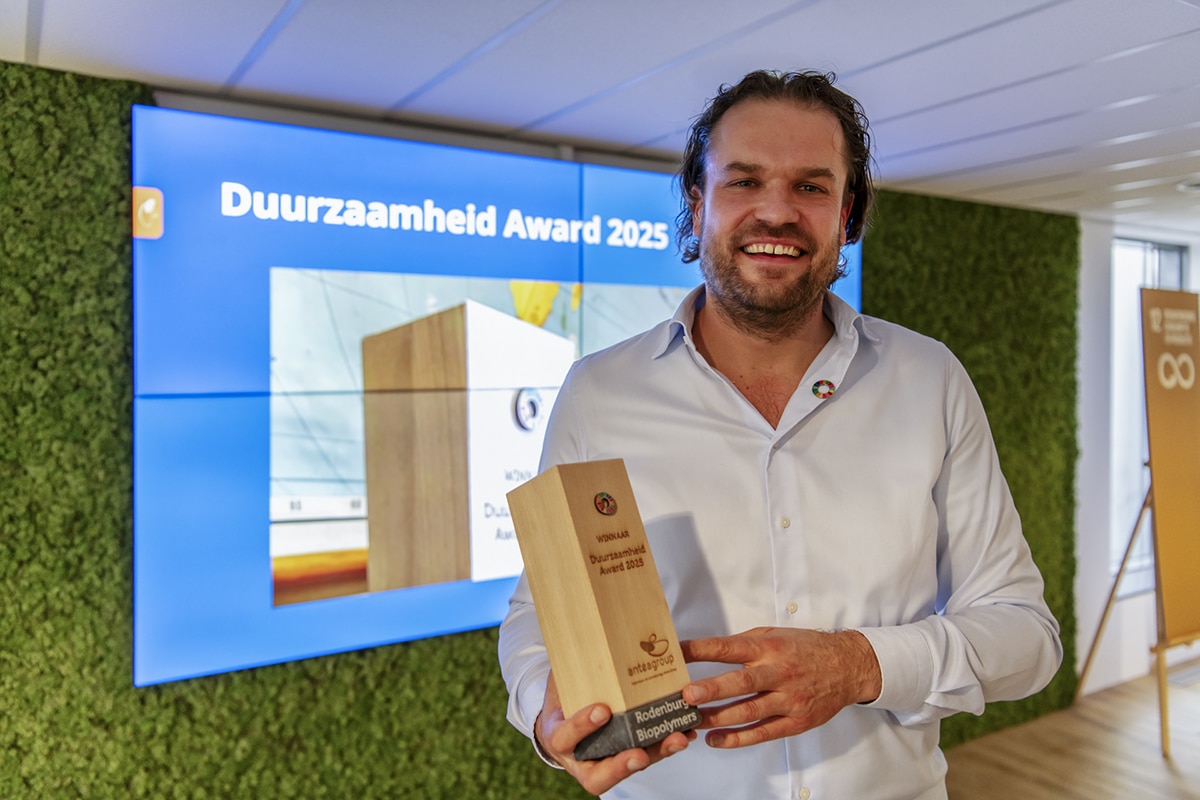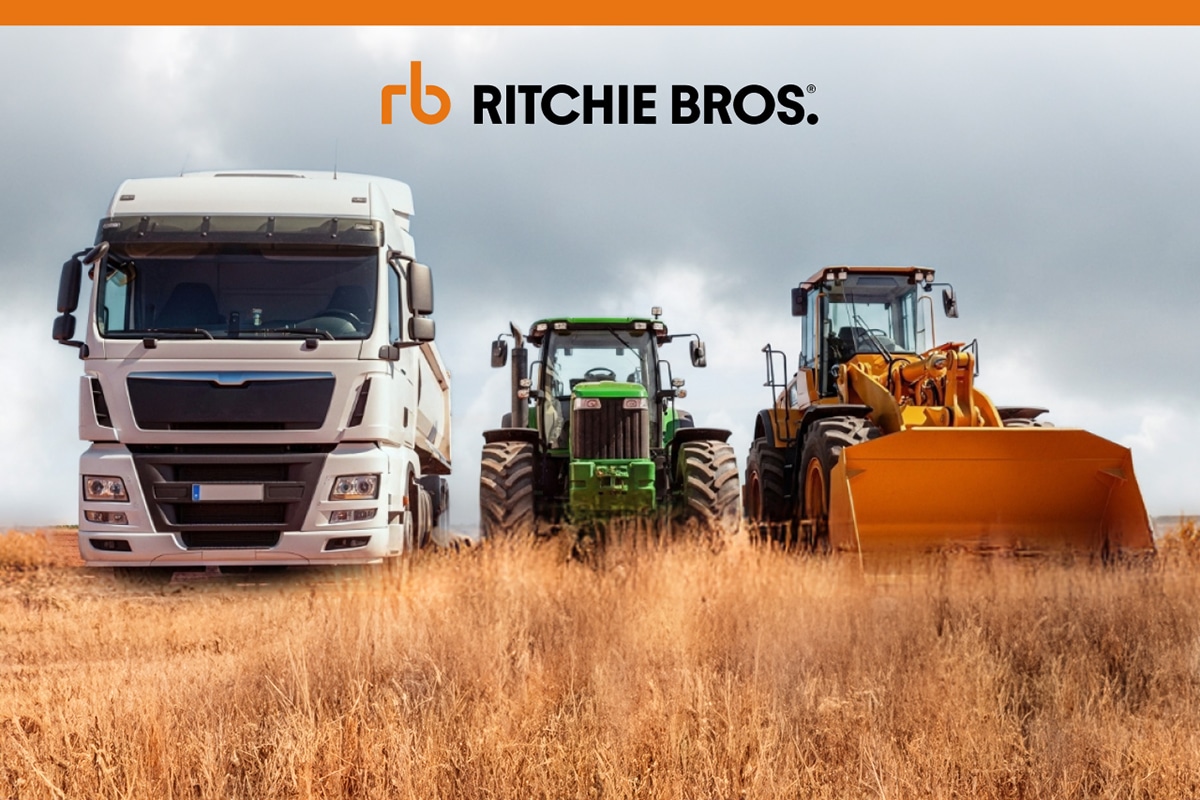
Rapidly growing demand for electric cranes
Removal of construction exemption nitrogen incentive for zero-emission equipment
A tragedy for construction, but at the same time an incentive to accelerate the purchase of emission-free equipment. With the removal of the construction exemption, the demand for electric cranes is growing, as they will be part of the solution in the coming years. At Sany Cranes.Services in Sassenheim, they are getting flat calls about the 80-ton electric telescopic crawler crane shown at bauma. Latest news: the 135 tonne version of the electric lattice boom crane is now also coming.
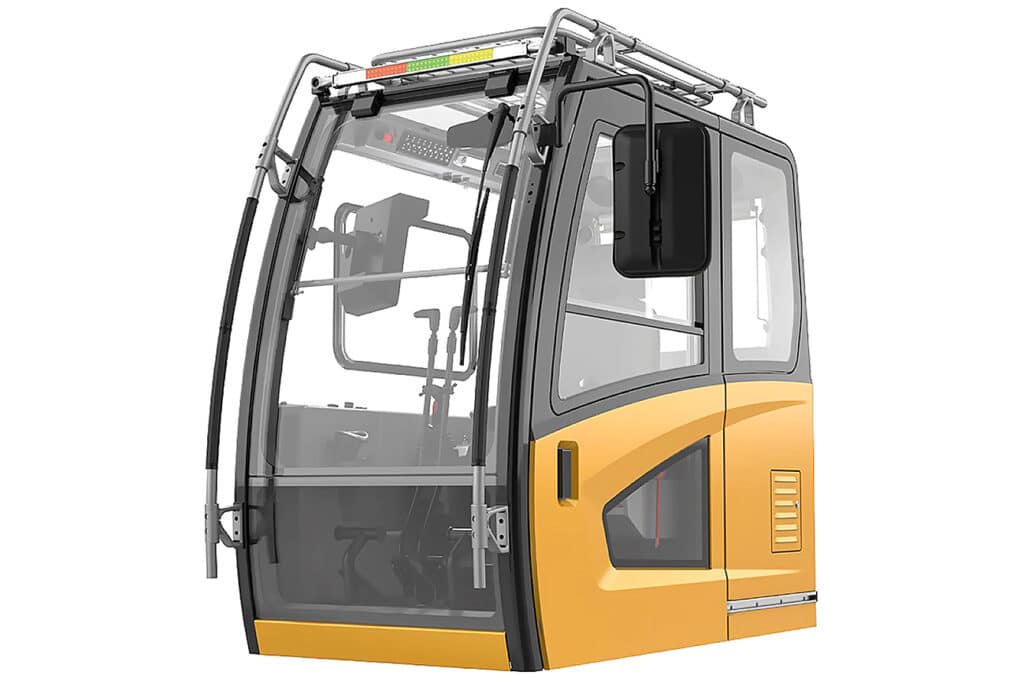
VolkerWessels had the premiere of the world's first all-electric crawler-mounted telescopic crane at the end of October, during equipment trade fair bauma in Munich. The SCE800TB-EV was displayed in VolkerWessels colors on the stand where it was officially handed over to the second largest construction company in the Netherlands. The electric 80-ton crane drew many interested people to the SANY booth, and not just to look. Because the demand for emission-free equipment is also growing outside the Netherlands, although we are still a leader in this field. This is demonstrated, for example, by VolkerWessels' order for a second SCE800TB-EV, which is expected to be delivered before the end of this year. The electric 80-ton crane ordered by Ballast Nedam will follow soon after.
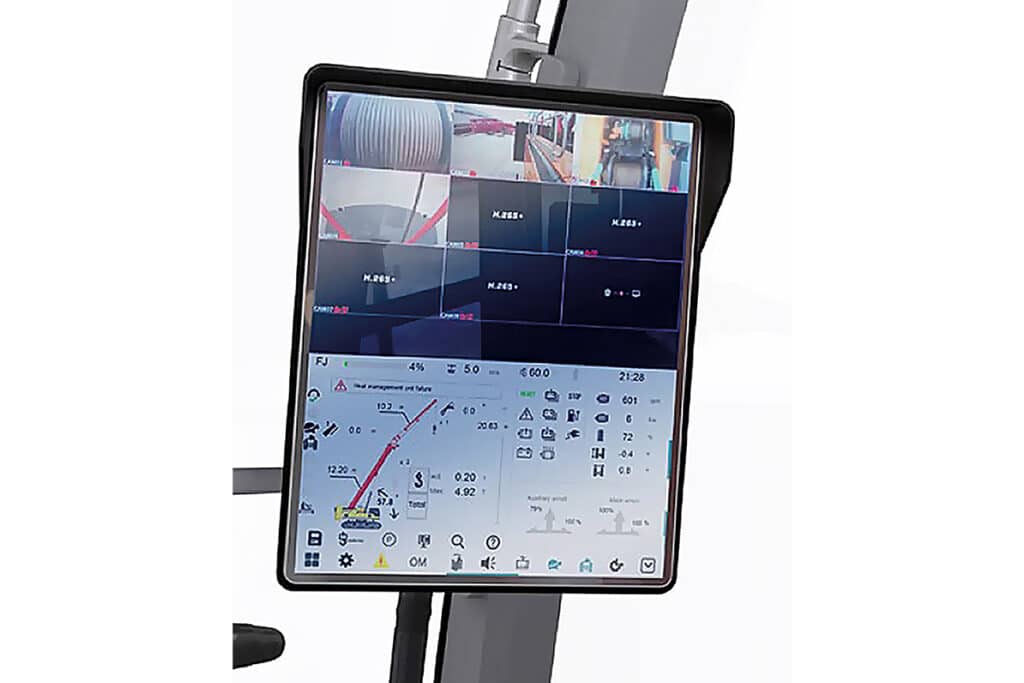
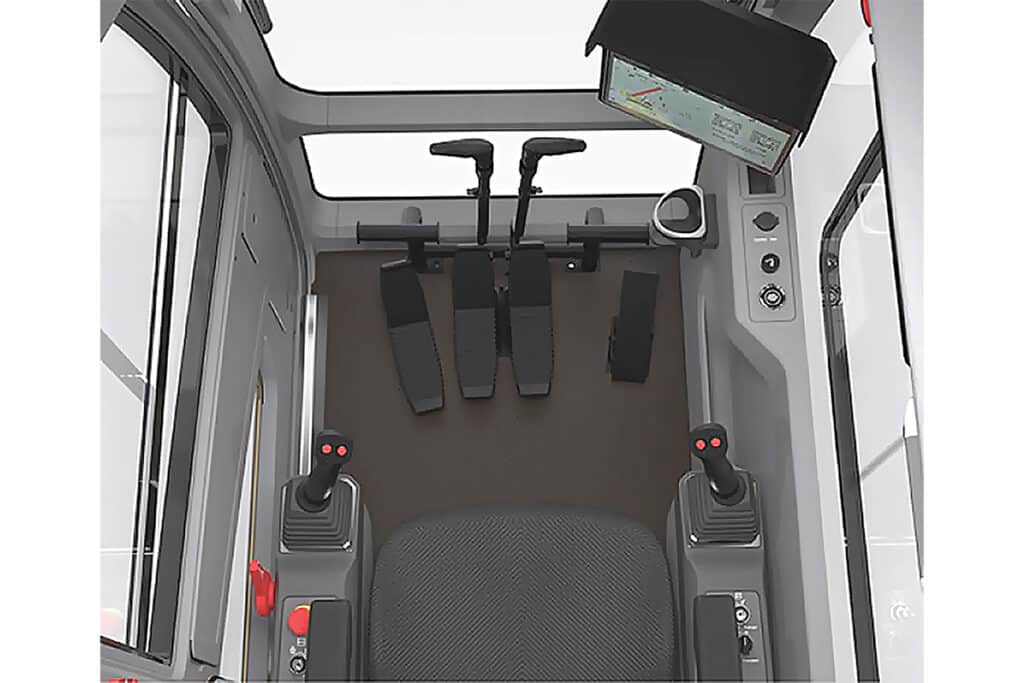
It's going to be a very busy year
The interest in this new type of electric crane was already growing strongly, but due to the removal of the construction exemption, it looks, that 2023 will already in advance be a very busy year for the team of Sany Cranes.Services. The Sassenheim-based company has been presenting itself as an importer of Sany cranes since 2019 and is also the official dealer for the Benelux. Whereby a direct representative of SANY is present within the company, to control the quality standards and align them with the European standard.
Sales manager Roland Quarré is experiencing a strong increase in demand in our country for zero emission machines, which can be used on construction sites to meet increasingly stringent municipal and national requirements regarding emissions and noise pollution. These strict requirements are taking on a new dimension with the Council of State's ruling on the construction exemption (see text box), which has long been feared by construction companies and has now been elevated to the status quo.
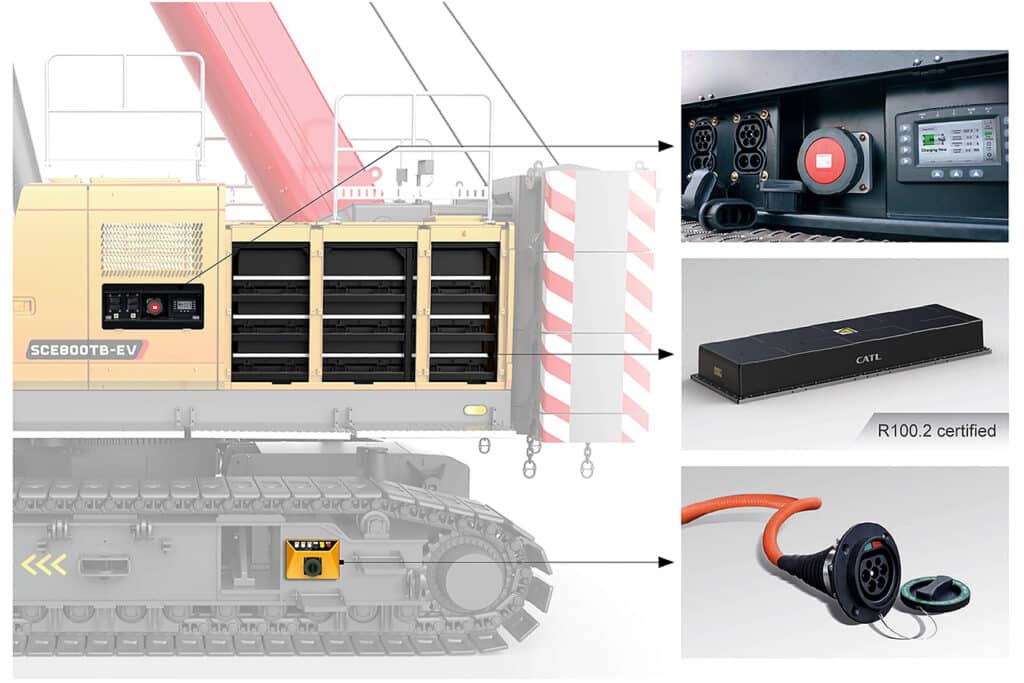
There is also a bright spot
The removal of the construction exemption is a downright tragedy for the construction industry. Yet there is also a bright spot: given current political conditions and the fossil fuel price circus, zero emission machines such as electric cranes can help reduce emissions. For many companies, this is a nice touch that is increasingly becoming a necessary step. For example, the team at Sany Cranes.Services expects that by next year, three out of every four machines sold will be electric. Given the expected sales growth and increasing rentals, it is important that customers place an order early. This is to ensure they can take delivery of a crane in 2023. In order to ensure service, Sany Cranes.Services has meanwhile begun construction of an entirely new and expanded service complex in Sassenheim.
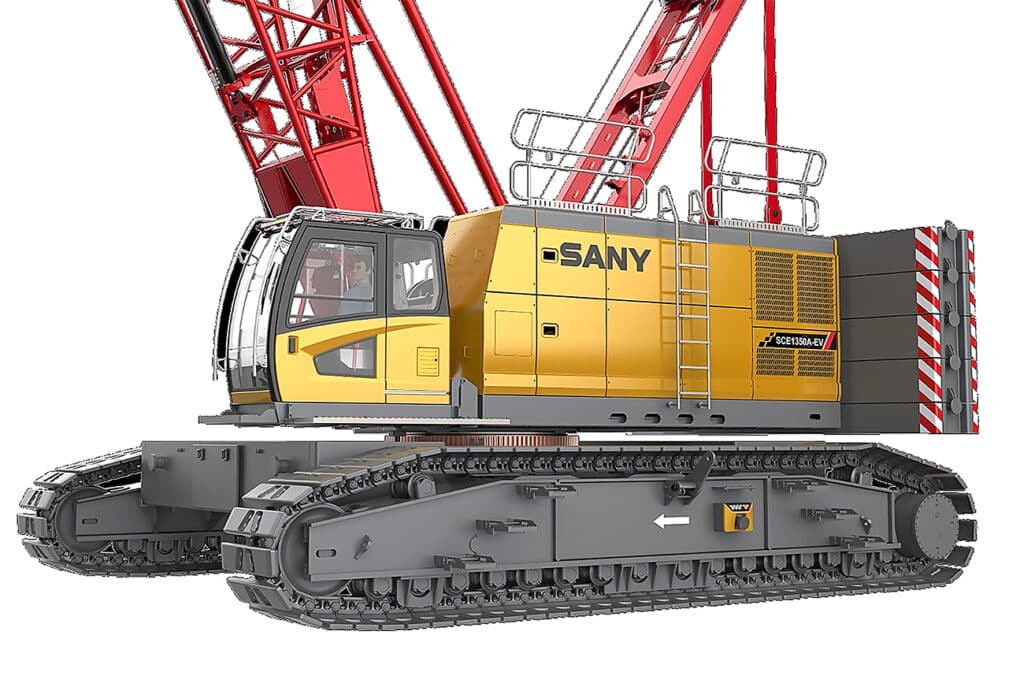
It's coming: the 135-ton version
Latest news is, that in early 2023 the first of the announced 135 tonne version of the electric crawler lattice boom crane will also arrive in Sassenheim. This is being awaited with interest by many. Like the SCE800TB-EV, the 1350A-EV is emission-free, quieter and more powerful than the Stage V diesel version. The battery capacity has increased in proportion to the crane's capacity versus the 80-tonner: 368 kW versus 282 kWh, this also allows it to work for 8 hours continuously. Further specifications are: 668 ton-meter. The single main boom measures up to 76 meters. Main mast with fixed jib together come out at 61+31=92 meters and main mast with luffing jib at 49-52 meters. Interestingly, the load table of the 135-ton 1350A-EV is better or equal to that of a 160-ton crane of another well-known brand, according to Sany Cranes.Services.
The new cabs of the electric cranes are slightly more spacious than the standard cab of the Stage V versions, and that seems to be very much to the liking of customers and operators. So who knows, we may soon see this cab on all cranes. The new machines are optionally available with a charging point in the track frame. This allows the crane to be charged while working, and makes lifting, slewing and lifting possible. Driving is possible, but for safety reasons should be supervised, with control of the cable. This prevents overrunning.
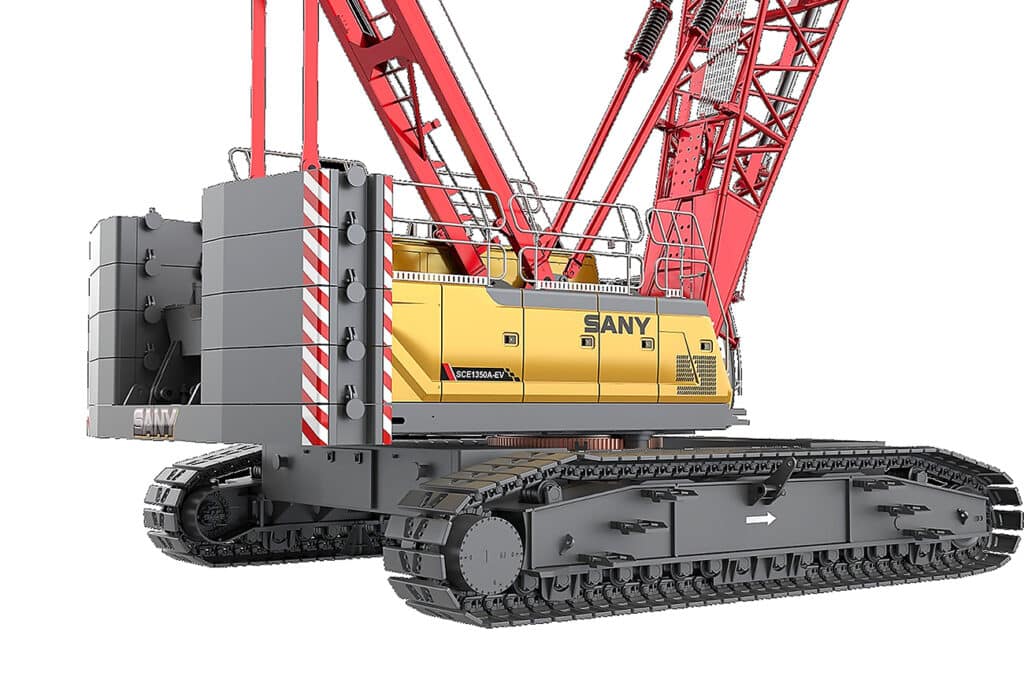
Special course for machinists
The Sany Cranes.Services team guides buyers of electric cranes with a special course for operators. For one thing, the operation of an electric crane is slightly different; the handling around battery charging also requires its own approach. As with passenger cars, safety is paramount when connecting power cables and the like. In addition, special manuals are available in the Dutch language. Sany Cranes.Services also ensures that the testing and inspection of the (electric) cranes to be delivered is done on its own location.
Netherlands is back to square one due to removal of construction exemption
The zero-emission construction site is the future, and that's a good thing. Because what has been warned about for years has become reality. Our government's nitrogen policy has failed miserably now that the Council of State has issued a final ruling in early November. The current rules for building are contrary to the Dutch interpretation of European nature regulations. How could it have come to this?
Since July 1, 2021, the Nature Protection Act includes the construction exemption, after the Program Approach to Nitrogen (PAS) had also already failed in court. The construction exemption meant that nitrogen emissions from certain construction activities did not have to be taken into account when granting permits. But unfortunately: according to the European Court of Justice, permission may only be granted if research shows that it is certain that individual protected natural areas (particularly Natura 2000 areas) will not be harmed as a result.
Drama for construction industry
"The judgment of the Council of State in the Porthos case is a tragedy for the construction industry." Bouwend Nederland could not put it more clearly and forcefully, because "the consequences for construction are far-reaching," said chairman Maxime Verhagen. "The cabinet will have to buy out peak developers like lightning in order to free up nitrogen space for nature, construction and new economic developments," echoed his call for action, because this nitrogen crisis has been going on for three and a half years and He - and he is not alone - finds that unacceptable, of course. The construction of homes and utility buildings, the widening of roads and railroad lines, the construction of wind farms and so on, it all comes to a standstill in the first instance. Because permits must again be applied for for each project; moreover, there are not enough experts to process all those applications in time.
The Netherlands is back to square one
Bouwend Nederland also expects construction costs to rise further as a result. "The reassessment of the 30 to 50 percent of projects still in the pipeline is going to take an average of three to six months. The house hunter, the energy transition, the climate and mobility are screwed. The Netherlands is back to square one."
For companies such as VolkerWessels, which has been working on the purchase of zero-emission equipment for some time, it may not be too bad, but for many others it will be a case of wait and see, and waiting always costs money in the construction industry. Looking back, we can conclude that it would have been better to invest that money in emission-free equipment right away.
Conclusion
Electrical equipment, including hoisting cranes, ensures that a construction company does not come to a standstill. With more options on the market, SANY is leading the way in this area.
